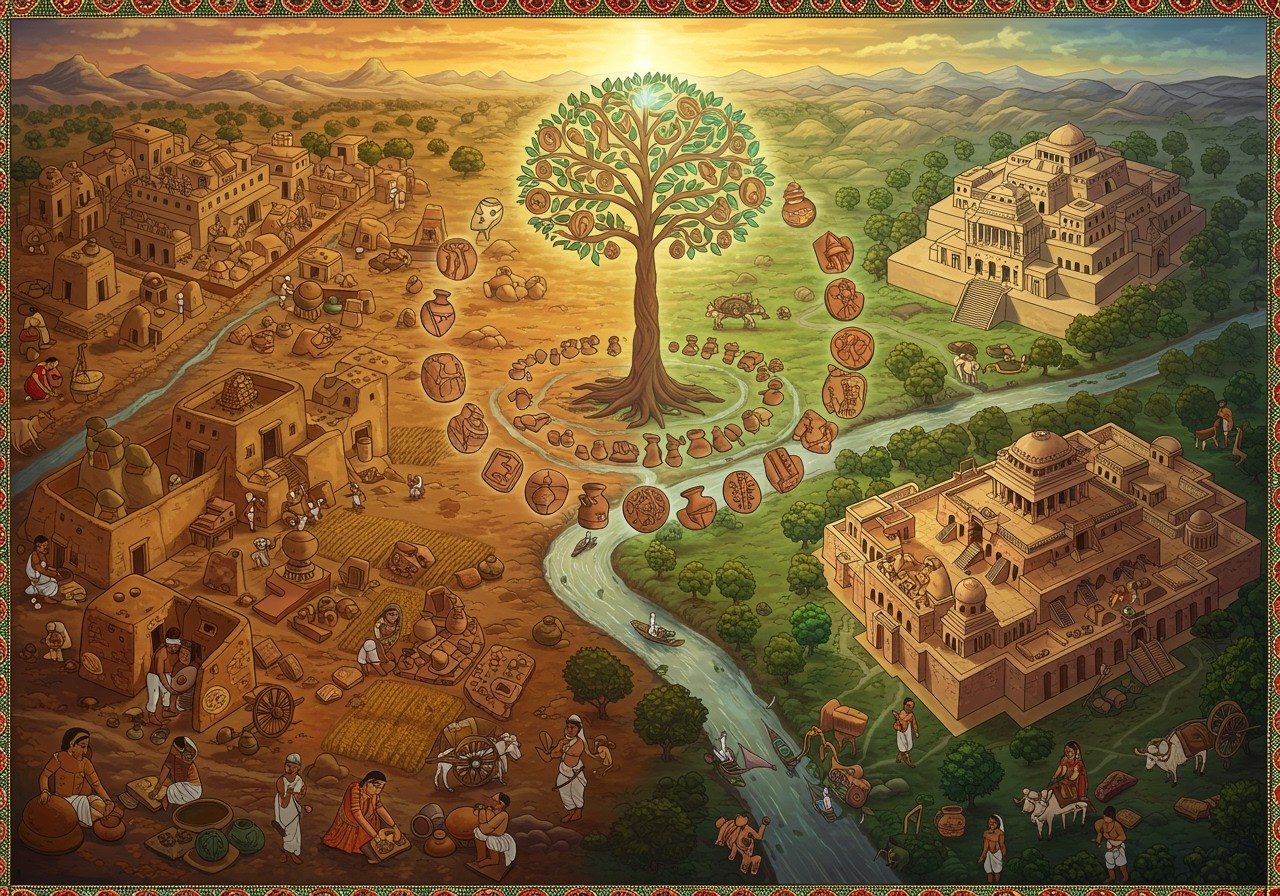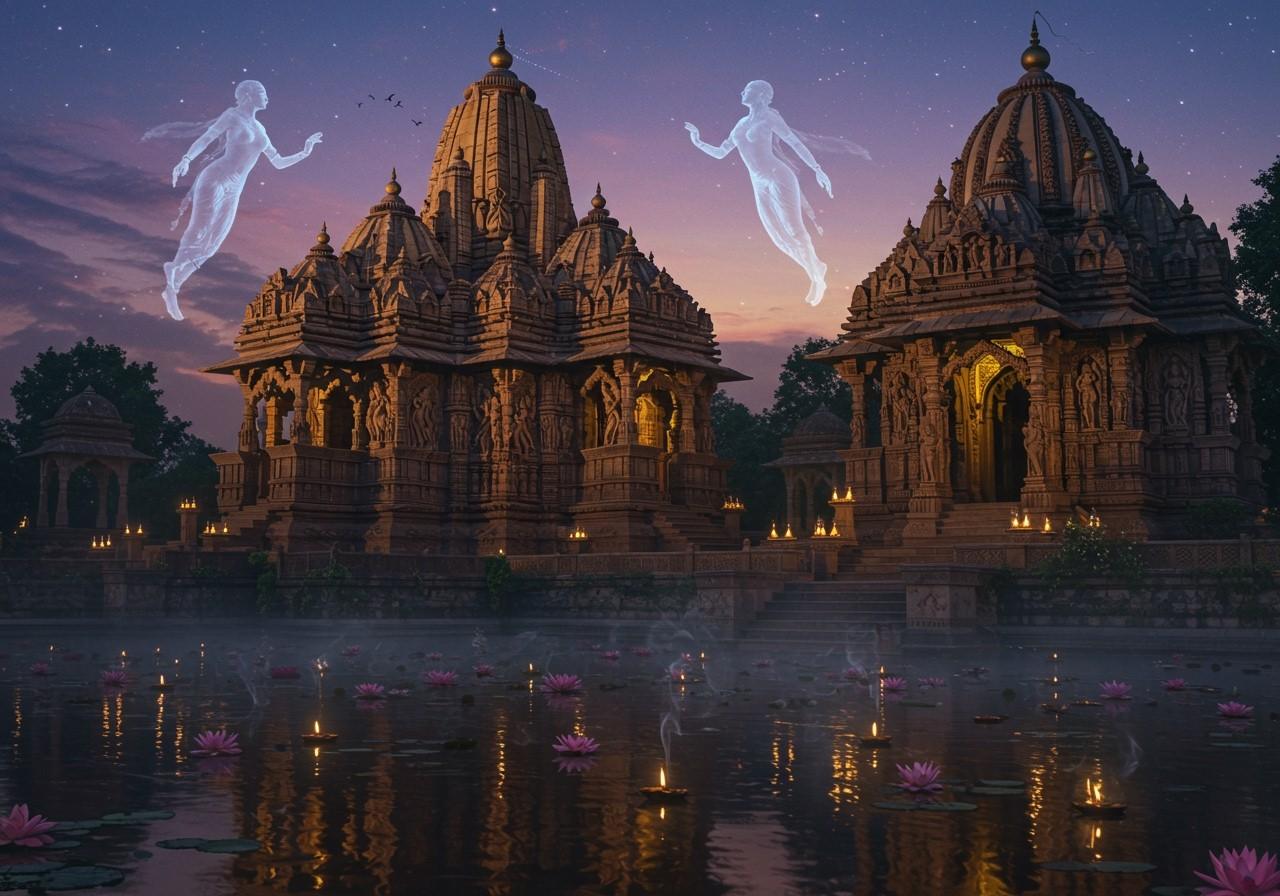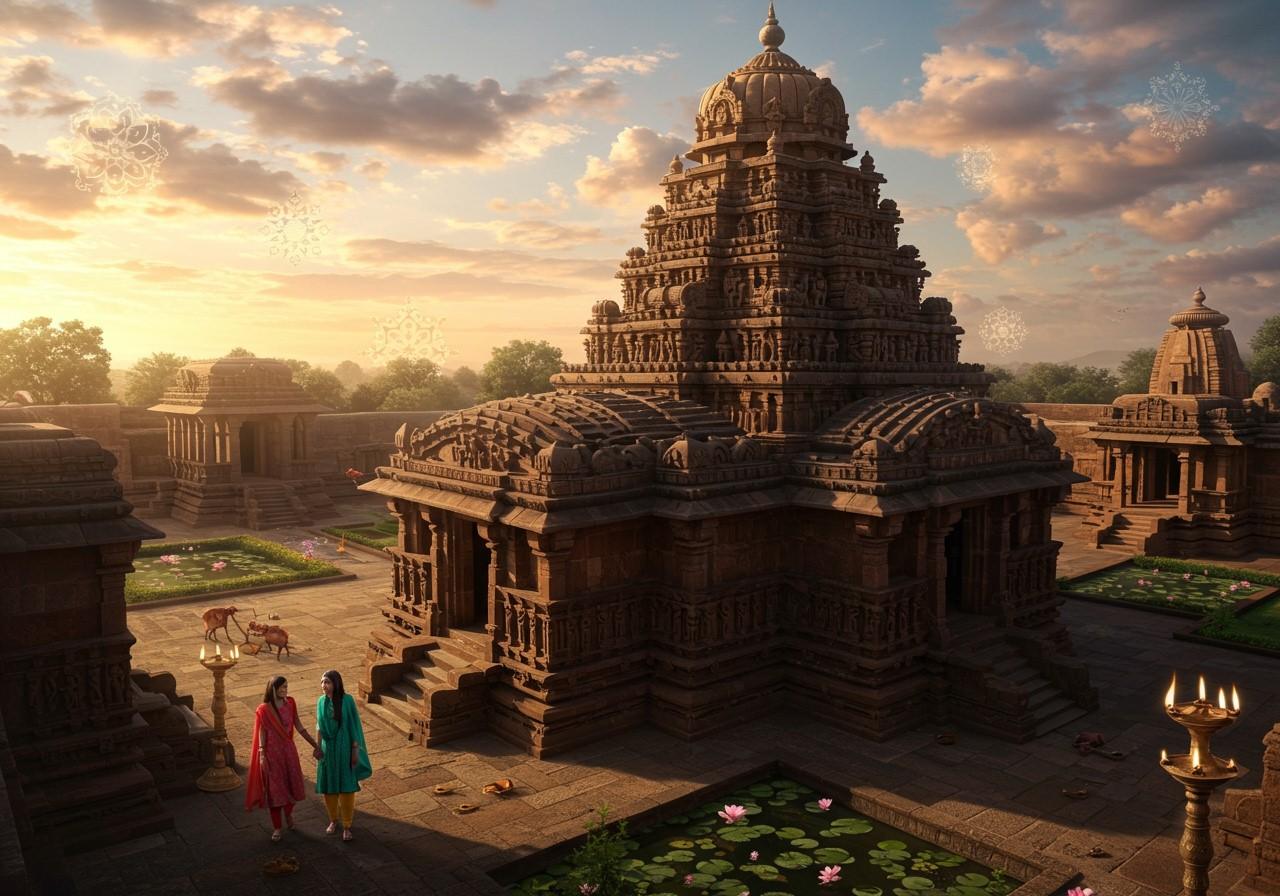
Mehrgarh, an ancient Neolithic site nestled in present-day Balochistan, Pakistan, offers a captivating glimpse into the dawn of human civilization. Dating back to approximately 7000 BCE, this early agricultural settlement stands as a testament to humanity’s transition from nomadic hunter-gatherers to settled agriculturalists. This blog delves into the profound connection between Mehrgarh and the Indus Valley Civilization (IVC), highlighting Mehrgarh’s pivotal role as a precursor to renowned IVC centers like Mohenjo-daro and Harappa. By understanding Mehrgarh, we gain a deeper appreciation for the rich tapestry of cultural heritage that continues to shape the Indian subcontinent.
Mehrgarh: An Overview

Mehrgarh stands as one of the earliest recognized farming settlements in South Asia, its origins tracing back to around 7000 BCE. Unearthed in the 1970s by French archaeologists Jean-François Jarrige and Catherine Jarrige, this remarkable site revolutionized our comprehension of the Neolithic era. The very name “Mehrgarh” echoes its ancient roots, signifying a pivotal shift from the nomadic lifestyle of hunting and gathering to the establishment of settled agriculture. This transformation is corroborated by the remnants of domesticated plants and animals discovered at the site. Furthermore, artifacts such as pottery, beads, and tools unearthed at Mehrgarh offer invaluable insights into the technological ingenuity of the time.
Mehrgarh and the Indus Valley Civilization Connection
Mehrgarh is widely regarded as a precursor to the Indus Valley Civilization, which flourished between 2600 and 1900 BCE. The connection between these two civilizations is evident through striking similarities in material culture, including pottery styles and technological innovations. Excavations at Mehrgarh reveal a continuity in settlement patterns, suggesting a gradual evolution towards the urbanized IVC. The discovery of early writing systems and trade networks at Mehrgarh hints at the foundations upon which the complex socio-economic structures of the later IVC were built. Moreover, shared motifs and construction techniques trace Mehrgarh’s enduring influence on the art and architecture of the Indus Valley.
Key Findings at Mehrgarh

The discoveries made at Mehrgarh are indispensable for our understanding of the region’s prehistory. Evidence of early dentistry, including drilled teeth dating back to approximately 7000 BCE, astounds researchers. Burial practices involving the use of red ochre and elaborate grave goods point towards early religious beliefs and social hierarchies. The presence of specialized crafts, such as bead-making and metallurgy, underscores the early development of technology. Furthermore, the sophisticated irrigation systems and agricultural innovations implemented at Mehrgarh laid the groundwork for the intensive farming practices that characterized the Indus Valley Civilization. The continuity of ceramic traditions from Mehrgarh to the IVC further emphasizes the strong cultural link between these two civilizations.
Mehrgarh and Mohenjo-daro: Comparative Insights
While Mehrgarh represents the nascent stages of agriculture, Mohenjo-daro stands as a symbol of urbanization within the Indus Valley Civilization. Comparing these two sites illuminates the remarkable evolution of society from agrarian settlements to complex urban centers. Mohenjo-daro’s advanced drainage systems and urban planning reflect the technological progress built upon the foundations laid at Mehrgarh. Both sites exhibit evidence of specialized crafts, yet Mohenjo-daro’s scale and complexity surpass those of its predecessor. The continuity of religious practices, as observed in artifacts and burial customs, strongly suggests a shared cultural heritage.
Mehrgarh’s Archaeological Significance
The excavation of Mehrgarh has yielded invaluable data on early human settlement and the development of civilization in South Asia. Stratigraphic layers offer a chronological framework for comprehending the region’s prehistory. The findings challenge the conventional notion of a single “cradle of civilization” by highlighting the simultaneous emergence of complex societies across the globe. The interdisciplinary study of Mehrgarh, encompassing anthropology, archaeology, and environmental science, enriches our understanding of ancient lifeways. Preserving and studying Mehrgarh remains crucial for reconstructing the historical narrative of the Indian subcontinent.
Conclusion: The Enduring Legacy of Mehrgarh
Mehrgarh stands as a powerful testament to the rich history and remarkable evolution of South Asian civilization. From its humble beginnings as a farming community to its profound influence on the grandeur of the Indus Valley Civilization, Mehrgarh’s story is one of innovation, adaptation, and cultural continuity. The discoveries at this site offer a unique window into the lives of our ancestors, illuminating their technological prowess, social structures, and spiritual beliefs. Understanding Mehrgarh allows us to appreciate the deep roots of our shared heritage and the extraordinary journey from simple agrarian societies to complex urban civilizations. As we honor and preserve this ancient site, we forge a deeper connection with our cultural identity and the traditions that have shaped our present. The legacy of Mehrgarh reminds us of the vital role history plays in guiding our future. It symbolizes our enduring spirit and the timeless bond we share with our ancestors. Let us cherish and learn from this remarkable link to our past, ensuring that its story continues to inspire and educate generations to come.
How Poojn.in Connects You with Ancient Traditions
At Poojn.in, we recognize the profound connection between contemporary Hindu practices and ancient heritage sites like Mehrgarh. The discovery of the Pashupati seal, associated with Lord Shiva, at Mehrgarh reveals the deep roots of our religious traditions, stretching back to the earliest civilizations. We offer a wide selection of authentic puja items to help you maintain these ancient connections:
- Rudraksha Malas and Shiva Lingams: Connect with Lord Shiva’s ancient form as Pashupati through these sacred items. We offer a variety of Rudraksha malas, sourced from sustainable sources, and Shiva lingams crafted from various materials, including natural stone and crystal.
- Copper and Brass Items: Similar to those used in ancient Mehrgarh, our pure copper and brass puja items bring a touch of authenticity to your spiritual practices. Choose from a range of kalashas, diyas, and other traditional items.
- Puja Thalis and Accessories: Reflecting historical worship methods, our puja thalis and accessories provide everything you need for a complete and meaningful puja experience. We offer a variety of sizes and styles to suit your needs.
- Dhoop and Incense: Following ancient aromatic traditions, our authentic dhoop and incense create a sacred atmosphere for your prayers and meditations. Choose from a range of traditional fragrances.
For devotees of Lord Shiva, we offer a curated selection of items specifically for festivals like Maha Shivaratri and Shravan Maas. Our collection includes items dedicated to various forms of Lord Shiva, from Mahadeva to Bholenath, helping you maintain a sacred connection to the roots of our civilization. Explore our Shiva Lingam collection and discover our beautiful Tulsi Malas. Visit Poojn.in to explore our complete range of traditional puja items, combining the preservation of our ancient spiritual heritage with the convenience of modern shopping.


